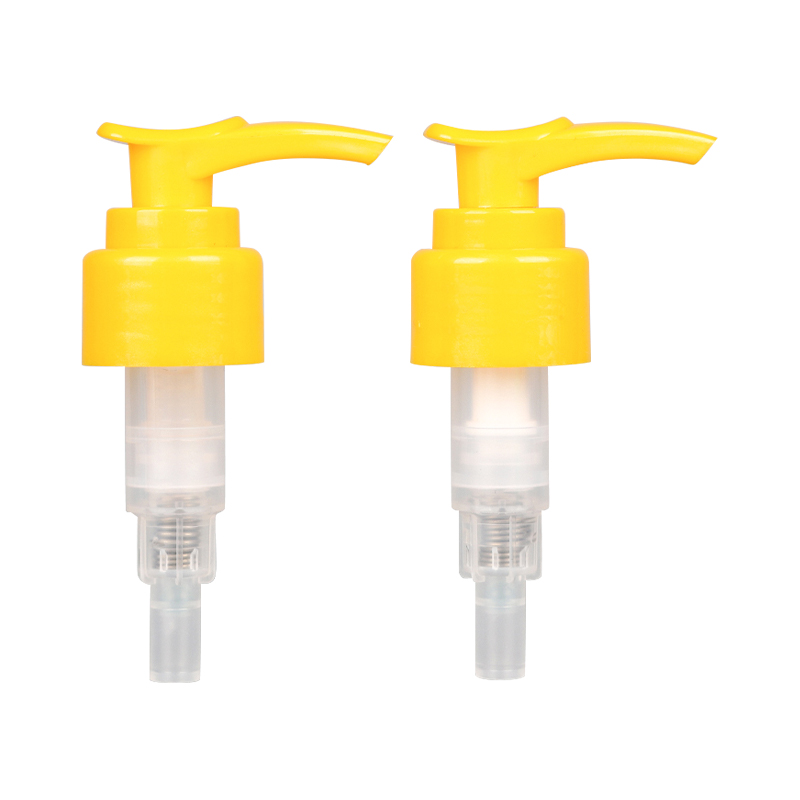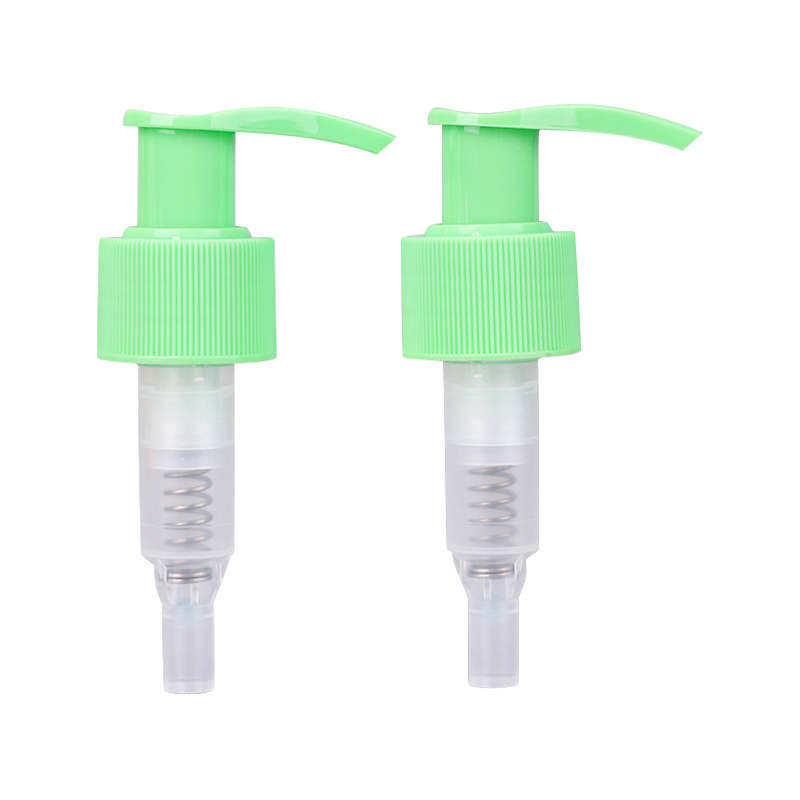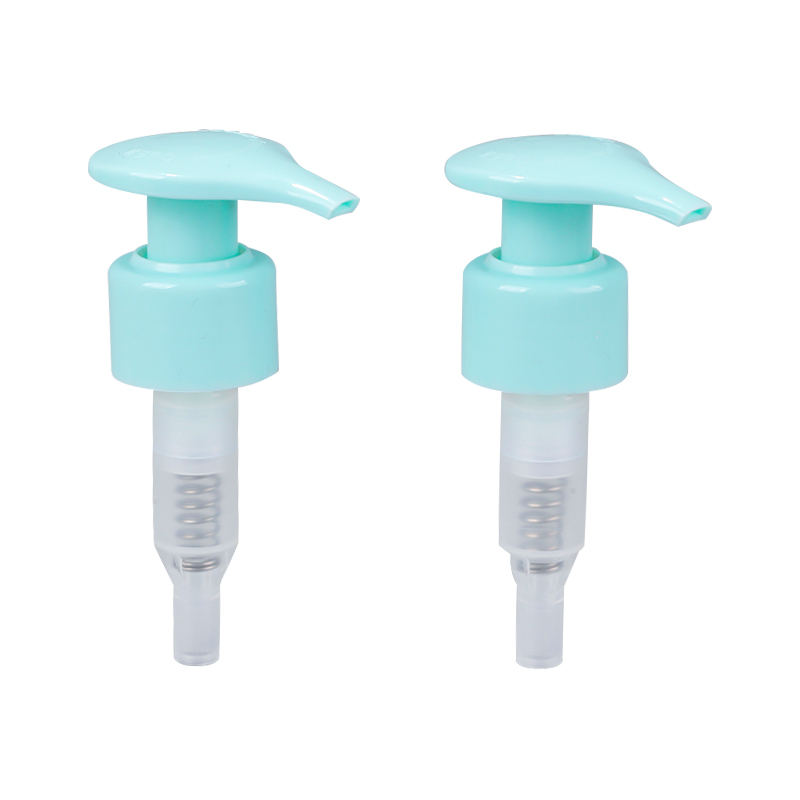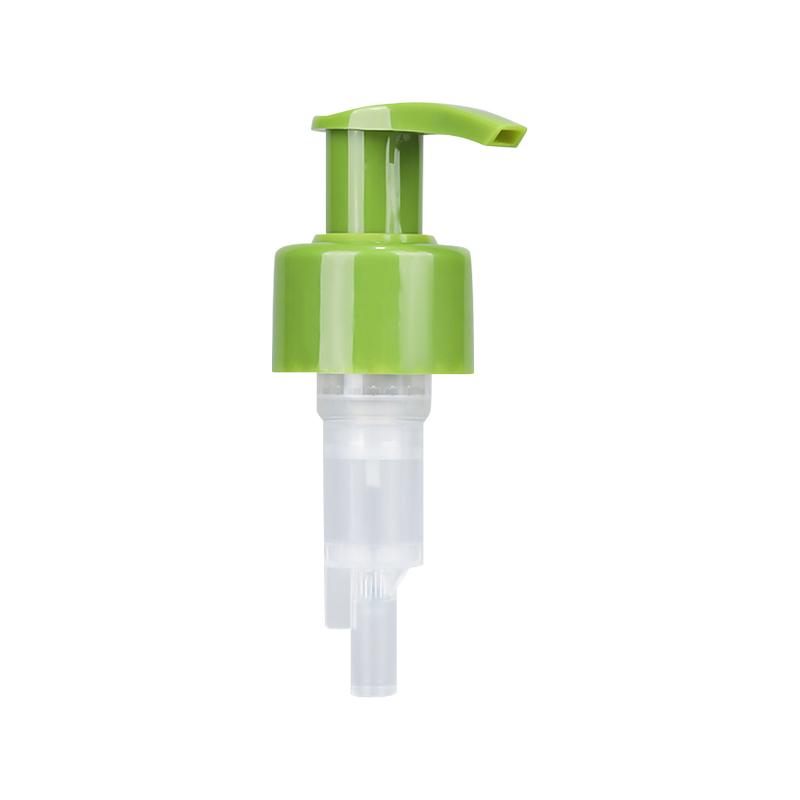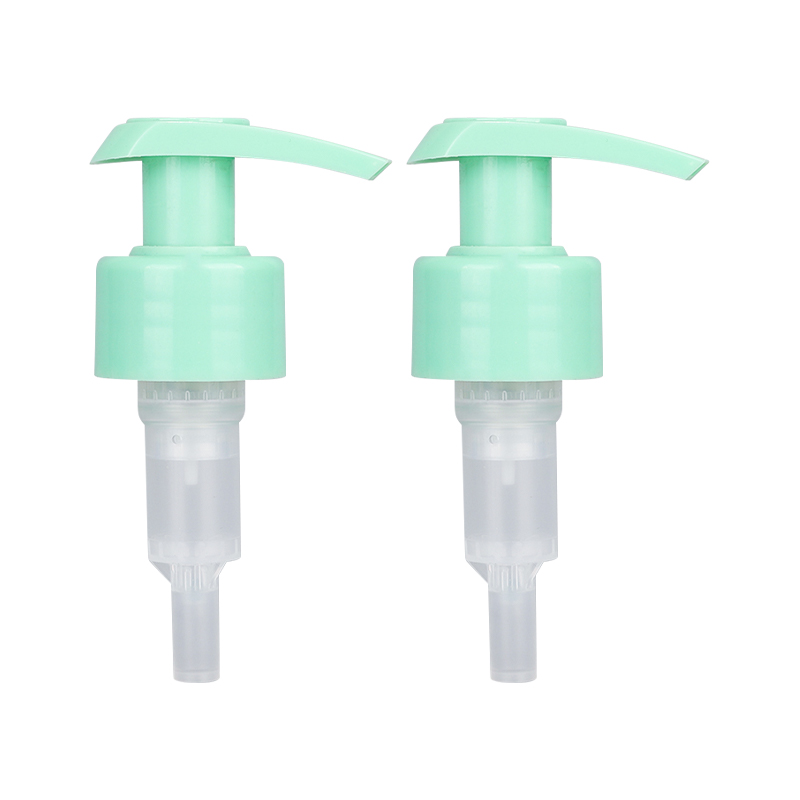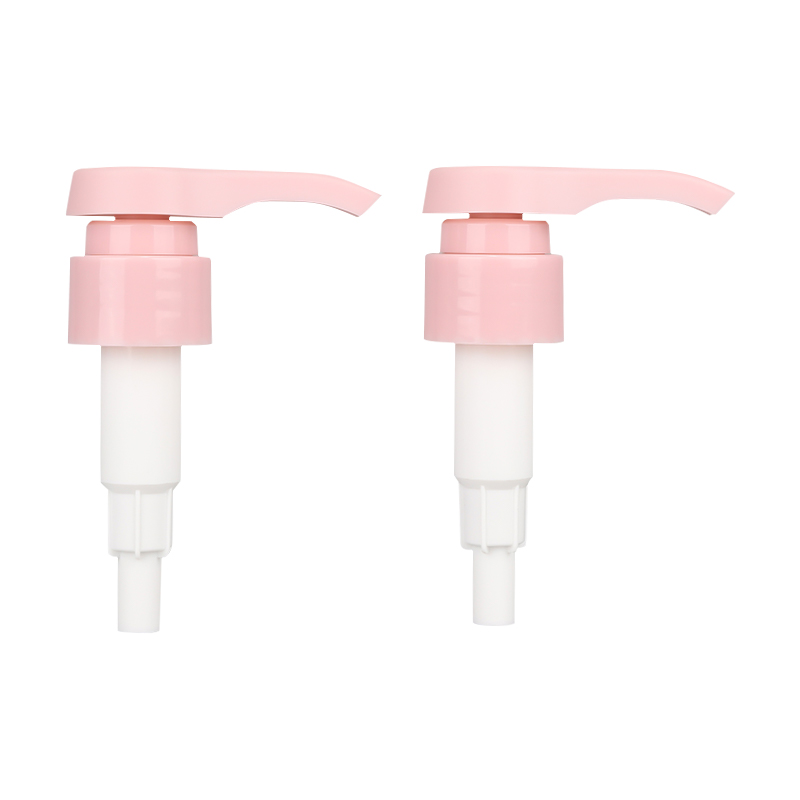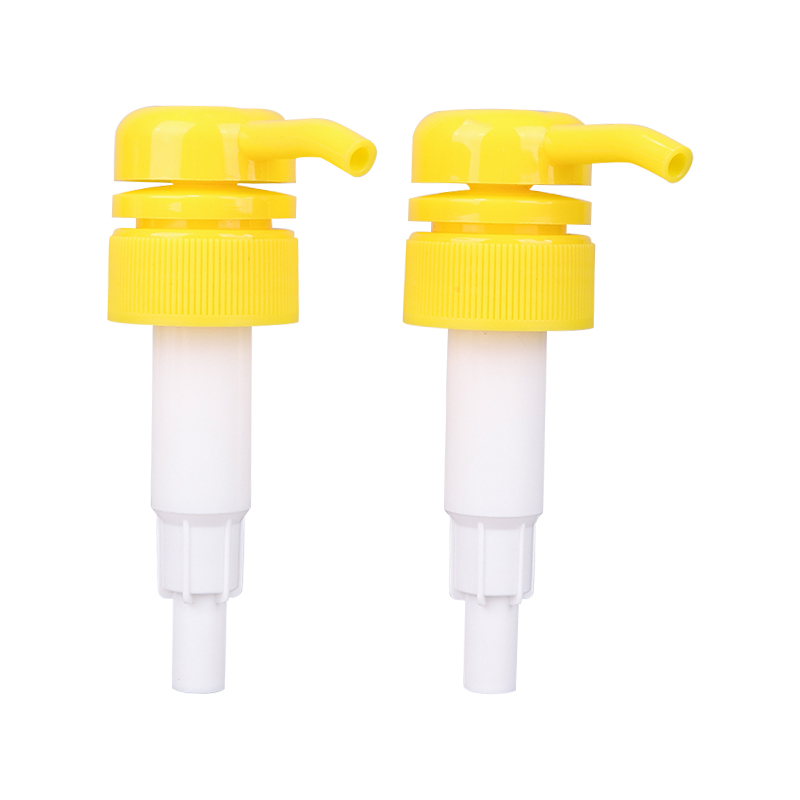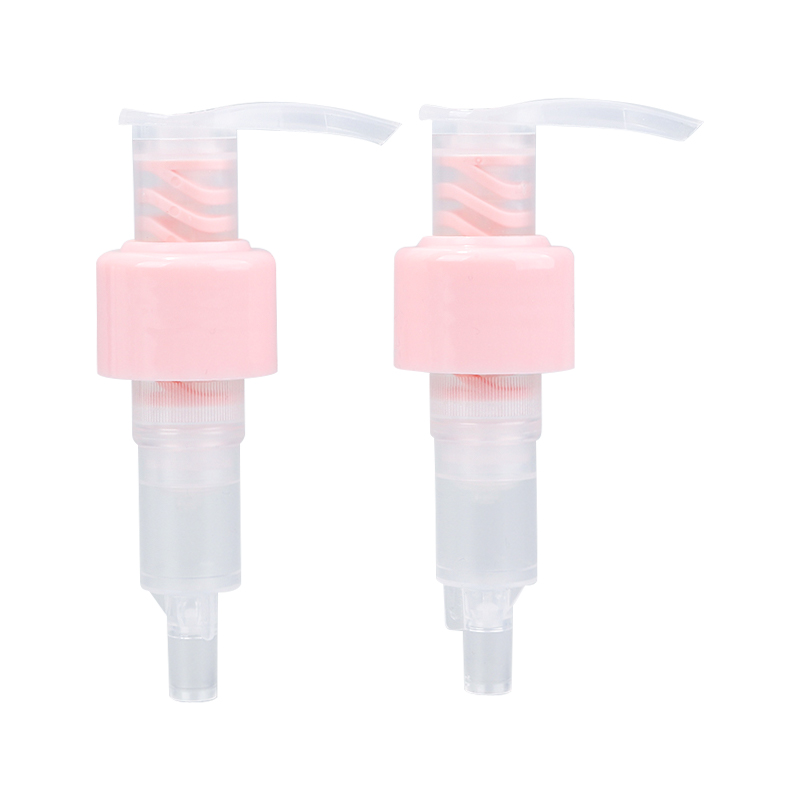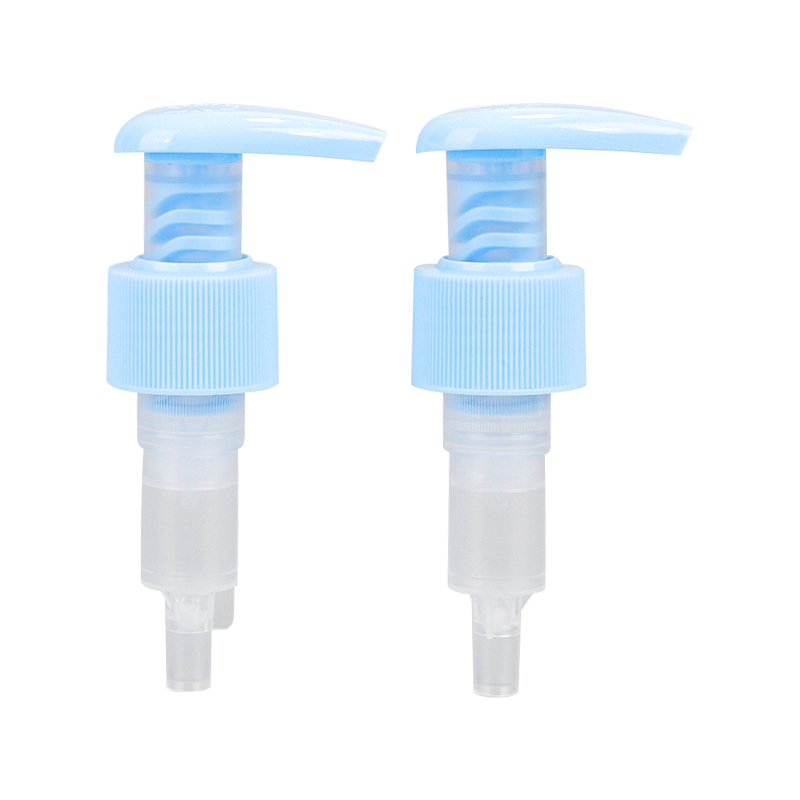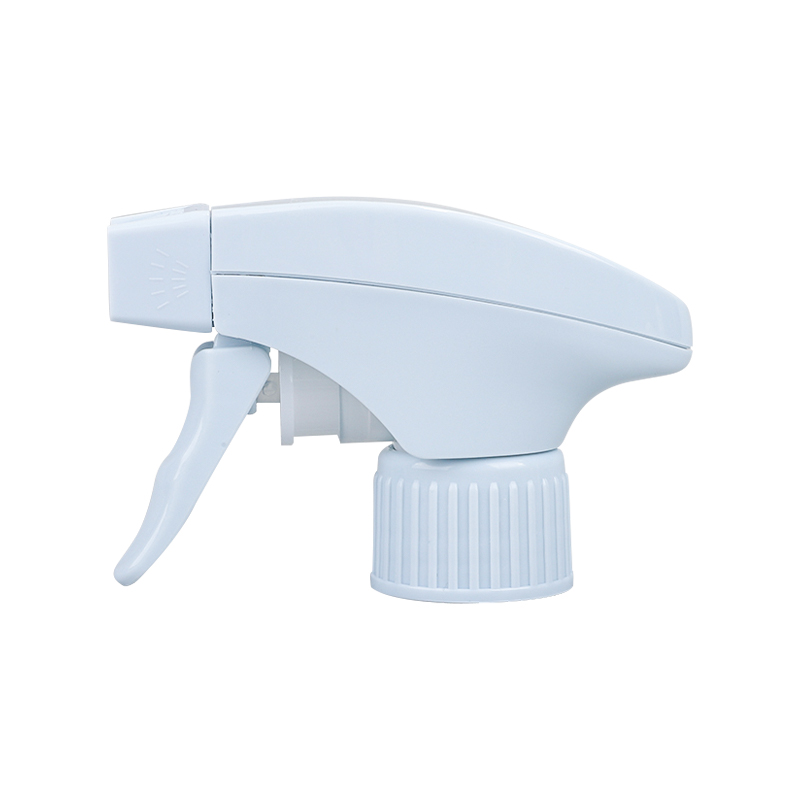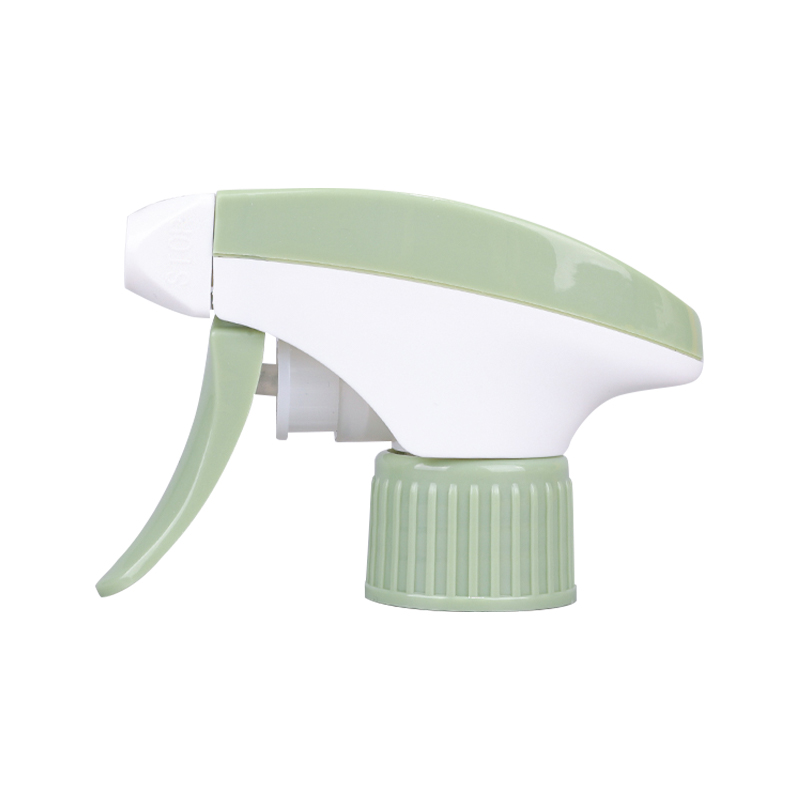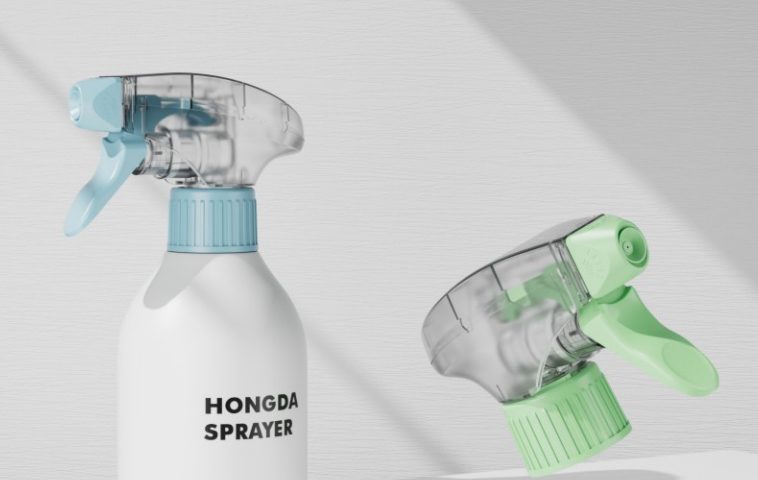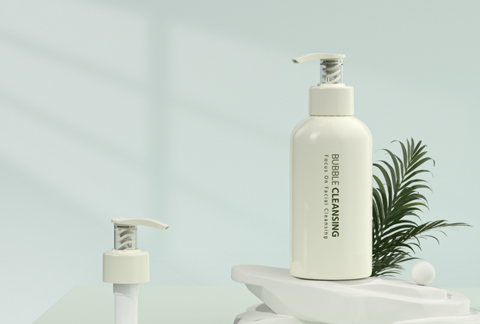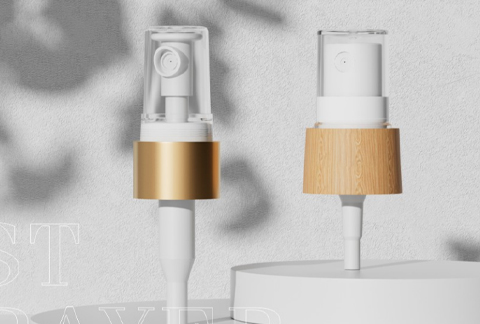1. Introduction
Plastic trigger sprayers are one of the most widely used and recognizable dispensing mechanisms across various sectors today. You’ve likely used one countless times—perhaps when cleaning your kitchen, misting plants, or applying a hair care product. Despite their simple appearance, these devices are ingeniously designed to provide consistent, targeted, and controllable liquid application. Their versatility and cost-effectiveness have made them an essential component in countless products found on store shelves and in industrial settings alike.
Widespread Use Across Industries
The popularity of plastic trigger sprayers lies in their adaptability. They are found in:
Household Products: Cleaners, disinfectants, air fresheners, window sprays.
Personal Care: Hair detanglers, setting sprays, facial mists.
Gardening & Agriculture: Fertilizers, pesticides, herbicides, foliar sprays.
Industrial & Automotive: Degreasers, solvents, lubricants, and car care chemicals.
Each of these industries relies on the ability of trigger sprayers to deliver a fine, controlled mist or jet stream to the desired surface—quickly, evenly, and safely.
Why They Are So Common
What makes plastic trigger sprayers so indispensable? A few key factors explain their ubiquity:
Simplicity of Use: Pull the trigger, and the device dispenses. There are no batteries, no charging, and no complex mechanics for the end-user.
Reusable and Durable: Many sprayers can be refilled and reused multiple times. They’re designed to withstand hundreds, if not thousands, of pulls without significant wear.
Low Manufacturing Cost: These sprayers can be mass-produced at low cost, making them ideal for consumer products that require affordable yet reliable dispensing solutions.
Customizability: Available in various colors, nozzle types, spray patterns, and bottle compatibilities, plastic trigger sprayers can be tailored to suit different branding, ergonomic, or functional needs.
Controlled Dispensing: Unlike open pour or squeeze-top solutions, trigger sprayers allow for precision—minimizing waste and maximizing product effectiveness.
Part of Sustainable Packaging Trends
In an era increasingly focused on sustainability, plastic trigger sprayers also offer a relatively eco-conscious option. While still made of plastic, many are now manufactured with recyclable materials and are designed for reuse. Some companies are even exploring biodegradable components and modular designs that allow the pump mechanism to be easily separated and recycled.
2. What is a Plastic Trigger Sprayer?
A plastic trigger sprayer is a manually operated dispensing device that’s typically attached to a bottle to deliver a liquid product in a controlled and effective manner. Unlike other dispensing methods like pumps or squeeze bottles, trigger sprayers use a lever-action system to create pressure and force liquids through a nozzle. They are commonly used in a variety of industries, ranging from household cleaning to personal care, agriculture, and even automotive applications.
These sprayers are an essential component in modern consumer and commercial packaging because they offer convenience, precision, and versatility. A user simply needs to squeeze the trigger to dispense the desired liquid. The device’s design and function allow for multiple spray patterns such as mist, stream, or foam, which can be easily controlled based on the user’s need.
Material Composition
Plastic trigger sprayers are made from durable thermoplastic materials, primarily Polypropylene (PP) and Polyethylene (PE), for their strength, flexibility, and resistance to chemicals. Both PP and PE are ideal for use in environments where exposure to a wide range of chemicals and physical stress is common. They also provide long-term durability, even with repeated use.
Polypropylene (PP): This material is the most commonly used for the housing and pump mechanism of plastic trigger sprayers. It is highly resistant to chemical reactions and fatigue, making it ideal for use with household cleaners, industrial chemicals, and personal care products. PP also provides high impact resistance, which is important in ensuring the sprayer lasts through numerous activations without breaking or cracking.
Polyethylene (PE): Often used for flexible components like dip tubes, PE offers both flexibility and chemical resistance. Its ability to remain flexible even in cold temperatures makes it a good choice for products that may be stored in various conditions, such as gardening products or agricultural sprays.
While PP and PE are the primary materials, manufacturers may also use polyethylene terephthalate (PET), polystyrene (PS), or other types of plastic for specialized applications. Some sprayers incorporate metal components or use stainless steel springs in the pump mechanism to improve durability and prevent corrosion, especially when the sprayer is used with more aggressive chemicals.
Key Components and Their Functions
A plastic trigger sprayer consists of several interdependent components that work in harmony to ensure the liquid is dispensed smoothly and efficiently. Understanding the function of each part helps us appreciate the sprayer's versatility and design.
Nozzle
The nozzle of a plastic trigger sprayer is one of the most important components because it directly impacts how the liquid is dispensed. The nozzle determines the spray pattern and the flow rate of the liquid, which is crucial for specific applications. For example, household cleaners often require a fine mist, while agricultural sprays might need a heavier stream to cover larger areas.
Spray Patterns: Nozzles can be designed for different types of spray patterns, such as a mist, stream, fan, or jet. Some sprayers even come with adjustable nozzles that allow users to switch between patterns depending on the application.
Material: Nozzles are often made from high-density polyethylene (HDPE) or PP, which are resistant to wear and the chemicals in the products they dispense.
Durability: A well-designed nozzle ensures that the spray is fine and consistent, which is especially important in commercial or industrial settings where large volumes of liquid need to be applied quickly and accurately.
The nozzle can often be adjusted by twisting it, allowing users to switch from a fine mist for gentle coverage (such as spraying perfume or hair products) to a more concentrated stream for areas that require a heavier application, like cleaning stubborn stains or watering plants.
Trigger Lever
The trigger lever is the part of the sprayer that the user squeezes to activate the pump mechanism. When pressure is applied, it triggers the internal pump to move liquid from the bottom of the bottle through the dip tube and out of the nozzle. The trigger lever is ergonomically designed for comfort, reducing hand strain during repeated use.
User-Friendly Design: Trigger levers are designed to fit comfortably in the hand and are often made of soft-touch plastics or rubber to ensure a firm grip. This reduces the amount of force required to activate the sprayer, making it more efficient for users who need to spray large areas, such as during cleaning or gardening tasks.
Mechanism of Action: When the trigger lever is squeezed, it compresses a spring-loaded piston or diaphragm inside the pump. This forces the liquid to move from the reservoir through the dip tube and into the nozzle, where it’s then sprayed. Once the trigger is released, a spring or similar mechanism pushes the piston back into place, drawing liquid back into the pump for the next spray.
Pump Mechanism
The pump mechanism is the heart of a trigger sprayer. Its primary function is to create the necessary pressure to draw liquid from the bottom of the bottle and expel it through the nozzle. The mechanism is typically made of multiple parts, including a piston, valve system, and spring, which work together to ensure reliable operation.
Piston or Diaphragm: The piston is a small, cylindrical component inside the pump that moves up and down when the trigger is pressed. The diaphragm, if used, serves the same function but works more like a flexible seal that creates the pressure. These components work by creating a vacuum inside the pump housing that draws the liquid up through the dip tube.
Spring: A spring is typically used to reset the piston or diaphragm after the trigger is released. This ensures that the sprayer is ready for the next use and helps maintain consistent pressure throughout the life of the device.
Valve System: Inside the pump, there is often a one-way valve that prevents the liquid from flowing backward into the bottle once it has been dispensed. This mechanism helps maintain a consistent flow and prevents air from entering the liquid chamber.
The pump mechanism is designed to withstand frequent use and exposure to various liquids, including corrosive cleaning agents and harsh industrial chemicals.
Dip Tube
The dip tube is a long plastic tube that extends from the bottom of the bottle to the pump mechanism. Its function is to transport liquid from the bottom of the bottle up to the pump for dispensing. The length and flexibility of the dip tube are crucial for ensuring that the sprayer can access liquid at the very bottom of the bottle, which reduces waste and maximizes product usage.
Material: Typically made of low-density polyethylene (LDPE) or other flexible plastics, the dip tube is designed to be pliable enough to bend and flex as the bottle is moved or tilted. It’s also resistant to the chemicals it might come into contact with.
Design Considerations: A well-designed dip tube prevents kinks and blockages that could interfere with liquid flow. The tube also needs to be long enough to ensure that nearly all of the liquid in the bottle can be accessed.
Closure or Cap
The closure or cap of a plastic trigger sprayer is the part that connects the sprayer to the bottle. It is an essential component because it ensures a secure seal between the sprayer and the bottle, preventing leaks during use or transport. The closure also typically includes a thread that allows the user to screw the sprayer onto the bottle firmly.
Thread Size: Different bottle sizes and types require different thread specifications. The most common thread sizes for trigger sprayers are 28/400, 28/410, and 24/410, which indicate the diameter and pitch of the thread. This ensures compatibility with a wide range of bottles.
Leak Prevention: Some closures are designed with gaskets or liners to improve the seal and prevent liquid from leaking out of the bottle, especially during shipping or storage.
Child-Resistant Features: Some caps are equipped with child-resistant features, such as a twist-and-lock mechanism, to prevent children from accidentally opening the bottle and misusing the contents.
3. How Does a Plastic Trigger Sprayer Work?
The operation of a plastic trigger sprayer may seem straightforward at first glance, but it actually involves a carefully designed mechanism that enables efficient and consistent dispensing of liquids. The core principle is the manual activation of a small pump housed inside the sprayer head, which works to draw liquid from the container and expel it through a nozzle in a controlled manner.
Step 1: Pulling the Trigger
When the user squeezes or pulls the trigger lever, it initiates the mechanical action inside the sprayer. The trigger is connected to a piston or diaphragm pump mechanism within the sprayer head. As the trigger is pulled, it moves the piston forward inside the pump chamber.
This movement creates pressure inside the chamber, forcing the liquid out of the pump.
At the same time, the motion compresses a spring located behind the piston, storing energy that will later return the piston to its starting position.
Step 2: Creating Suction and Drawing Liquid
The key function of the pump is to draw liquid from the bottle and push it out through the nozzle. This happens due to a combination of suction and pressure created by the pump mechanism:
Inside the pump chamber, a one-way valve (also called a check valve) prevents the liquid from flowing backward into the bottle after being drawn up. This valve opens when the trigger is pressed and closes when the trigger is released.
As the piston moves forward, the pressure inside the chamber rises, pushing liquid out through the nozzle.
When the trigger is released, the spring pushes the piston back to its original position, creating a vacuum inside the chamber.
This vacuum opens a second one-way valve located at the base of the pump, allowing liquid to be drawn up through the dip tube from the bottle into the pump chamber.
The dip tube extends down to the bottom of the bottle, ensuring that nearly all the liquid can be accessed and used.
Step 3: Dispensing Through the Nozzle
Once the liquid is forced out of the pump chamber, it travels through the nozzle, where it is atomized or shaped into the desired spray pattern. The design of the nozzle plays a critical role in determining how the liquid is dispensed:
Fine Mist: The nozzle can break the liquid into tiny droplets, producing a mist suitable for evenly coating surfaces or applying delicate products like perfumes or hair sprays.
Jet Stream: Alternatively, the nozzle can be adjusted to produce a strong, concentrated stream of liquid. This type of spray is ideal for targeting specific areas or removing tough stains.
Fan Spray: Some nozzles distribute liquid in a wide, fan-shaped spray that covers large surface areas evenly, which is useful for cleaning or agricultural purposes.
Foam: Certain specialized nozzles include a foam insert or mesh that mixes air with the liquid, creating a thick foam useful for cleaning applications where adherence to surfaces is important.
Many trigger sprayers feature adjustable nozzles that allow users to twist or turn the nozzle tip to switch between different spray patterns or to close the nozzle completely to prevent leaks during storage.
Step 4: Resetting the Trigger
After the liquid is dispensed, releasing the trigger allows the spring inside the pump to push the piston back to its original position. This resetting action is crucial for preparing the sprayer for the next activation:
As the piston moves back, it draws fresh liquid up from the bottle into the pump chamber through the dip tube.
The one-way valves ensure that liquid flows only in the intended direction, preventing backflow or air from entering the system.
This cycle can be repeated hundreds or thousands of times, making the sprayer a durable and reliable dispensing tool.
4. Types of Plastic Trigger Sprayers
Plastic trigger sprayers are incredibly versatile, available in a wide variety of types to meet the diverse needs of industries ranging from household cleaning to heavy industrial applications. Each type of sprayer is specifically designed with particular features and materials that optimize performance for its intended use. Understanding these different types can help manufacturers and consumers choose the best sprayer for their product or application.
Standard Sprayers
The most common and widely used type is the standard plastic trigger sprayer. These sprayers offer general-purpose spraying capabilities and usually come equipped with adjustable nozzles. The nozzles can be twisted or turned to vary the spray pattern, allowing the user to switch between a fine mist and a concentrated stream.
Applications: These sprayers are ideal for household cleaners, disinfectants, air fresheners, and many personal care products.
Advantages: They are cost-effective, easy to use, and suitable for a broad range of liquids, including water-based and light chemical solutions.
Materials: Made mainly from polypropylene (PP) and polyethylene (PE), these sprayers balance durability with affordability.
Foaming Sprayers
Foaming sprayers are specialized trigger sprayers designed to mix air into the liquid product to generate foam. This type is essential for products like hand soaps, shampoos, and some cleaning detergents where a thick foam is more effective or desirable than a liquid spray.
How They Work: These sprayers contain an internal foaming chamber or mesh screen that aerates the liquid as it is dispensed.
Applications: Common in bathroom and kitchen cleaners, as well as personal hygiene products.
Benefits: Foam tends to cling to surfaces longer than liquid sprays, allowing for better cleaning and less runoff. It also uses less product per application.
Materials and Design: Typically built with slightly more intricate internal components to facilitate foam generation, often made of PP for chemical resistance.
Heavy-Duty/Industrial Sprayers
Heavy-duty or industrial-grade sprayers are built to withstand the rigors of demanding environments and more aggressive chemicals, such as solvents, degreasers, and pesticides. These sprayers often incorporate reinforced components and sometimes metal parts, such as stainless steel springs, to enhance durability.
Durability: Designed to resist corrosion and degradation from harsh chemicals.
Applications: Widely used in automotive, agricultural, and manufacturing industries where exposure to solvents, oils, or corrosive substances is common.
Features: They may have higher pressure output, longer-lasting springs, and seals made from chemical-resistant materials like Viton or EPDM.
Materials: Use specialized polymers and elastomers to resist chemical attack and mechanical wear.
Child-Resistant Sprayers
Safety is critical when dispensing potentially harmful liquids, especially in households with children. Child-resistant trigger sprayers incorporate locking mechanisms designed to prevent accidental spraying.
Locking Systems: These may include twist-to-lock nozzles, trigger locks, or safety clips that require deliberate action to unlock before the sprayer can be used.
Applications: Used mainly for hazardous household chemicals, pesticides, or pharmaceuticals.
Benefits: They provide peace of mind to consumers by reducing the risk of accidental exposure or misuse.
Design Considerations: The locking feature must balance safety with ease of use for adults, often requiring testing to meet regulatory standards.
Ergonomic Sprayers
Repeated use of trigger sprayers can cause hand fatigue or discomfort, especially in commercial or industrial settings where spraying tasks are frequent and prolonged. Ergonomic trigger sprayers are designed to minimize strain and improve user comfort.
Design Features: These sprayers may have contoured triggers, soft-touch grips, and optimized lever mechanics that reduce the force needed to spray.
Applications: Popular in janitorial services, gardening, beauty salons, and anywhere frequent spraying is required.
Materials: May incorporate soft rubberized materials on the handle or trigger to improve grip and reduce slip.
Advantages: Enhanced comfort can improve productivity and reduce the risk of repetitive strain injuries.
5. Common Applications
Plastic trigger sprayers are among the most versatile liquid dispensing devices, widely used across numerous industries and everyday life scenarios. Their ability to deliver controlled, precise sprays or streams of liquid makes them indispensable for a broad range of applications, from household chores to specialized industrial uses.
Household Cleaning
One of the most familiar uses of plastic trigger sprayers is in the realm of household cleaning products. They are a staple on bottles of window cleaners, disinfectants, multipurpose surface cleaners, and bathroom sprays.
Window and Glass Cleaners: Trigger sprayers allow users to evenly apply cleaning solutions in a fine mist, ensuring streak-free surfaces and thorough coverage.
Disinfectants: These sprayers dispense sanitizing liquids precisely to kill germs on high-touch surfaces like doorknobs, countertops, and kitchen appliances.
Multipurpose Cleaners: Adjustable nozzles let users switch between mist and stream modes to target specific spots or cover larger areas quickly.
The ergonomic design of many sprayers also helps reduce hand fatigue during frequent household cleaning tasks.
Personal Care Products
In the personal care industry, plastic trigger sprayers are widely used for various hair and skincare products. Their ability to deliver a gentle mist or targeted spray ensures effective product application without waste.
Hair Sprays and Leave-in Conditioners: A fine mist is essential for even distribution without over-saturating the hair.
Facial Toners and Mists: These products require gentle atomization to refresh and hydrate skin delicately.
Body Sprays and Sunscreens: Controlled delivery helps users apply the product evenly over large surface areas.
Many personal care sprayers feature nozzles that produce soft, fine sprays suitable for sensitive skin applications.
Gardening and Agriculture
Trigger sprayers are widely adopted in gardening and agricultural settings due to their ease of use and precise liquid delivery.
Fertilizers and Nutrients: Sprayers allow gardeners and farmers to apply liquid fertilizers accurately to plants, minimizing waste and ensuring healthy growth.
Pesticides and Herbicides: Controlled spray helps target pests or unwanted plants without excessive chemical usage, reducing environmental impact.
Plant Misters: Some sprayers are specially designed to produce very fine mist, which is ideal for delicate seedlings or indoor plants that require gentle hydration.
Agricultural sprayers are often made from chemical-resistant materials to withstand exposure to harsh pesticides and fertilizers.
Automotive Products
The automotive sector also relies heavily on plastic trigger sprayers for a variety of cleaning and maintenance products.
Glass Cleaners: Used to spray cleaning solutions onto windshields and windows, ensuring clear visibility.
Tire and Wheel Sprays: These sprayers apply protectants and cleaners to tires and rims, helping maintain appearance and prolong tire life.
Interior Detailers: Sprayers dispense conditioners and cleaning agents for dashboards, leather, and upholstery, often requiring adjustable spray patterns for delicate surfaces.
Many automotive sprayers feature heavy-duty components to handle solvents and degreasers without degradation.
Industrial and Commercial Use
In industrial and commercial settings, plastic trigger sprayers are indispensable tools for dispensing a variety of liquids under demanding conditions.
Degreasers and Solvents: Heavy-duty sprayers dispense powerful cleaning agents on machinery and equipment.
Sanitizers and Disinfectants: Essential in healthcare, food processing, and hospitality industries for maintaining hygiene standards.
Lubricants and Anti-Corrosion Agents: Precise application prevents overuse and reduces waste, while protecting critical equipment.
These sprayers are built with durable materials designed to resist chemical corrosion and repeated heavy use.
6. Benefits of Using Plastic Trigger Sprayers
Plastic trigger sprayers have become a staple in various industries and everyday applications due to their numerous advantages. Their design and material properties provide practical benefits that enhance usability, efficiency, and sustainability.
User Control and Precision
One of the most significant benefits of plastic trigger sprayers is the precise control they offer to users over both the amount and direction of the liquid dispensed.
The trigger mechanism allows users to regulate how much liquid is sprayed simply by adjusting the pressure applied on the trigger. A light squeeze produces a fine mist, while a firmer squeeze can release a concentrated jet stream.
This control minimizes waste by delivering only the necessary amount of product, which is particularly important for expensive or potent liquids like disinfectants and pesticides.
Adjustable nozzles let users control the spray pattern, switching between wide coverage and targeted application, which improves effectiveness and reduces overspray.
Cost-Effectiveness
Plastic trigger sprayers are highly cost-effective for manufacturers and end-users alike.
The raw materials, primarily polypropylene (PP) and polyethylene (PE), are inexpensive and widely available.
Injection molding technology allows mass production at low cost, making these sprayers affordable even at large scales.
Their affordability means sprayers can be replaced easily without significant financial burden, which is beneficial for industries requiring frequent product changes or hygiene maintenance.
The simple mechanical design requires minimal maintenance and has a long functional life, reducing the overall cost of ownership.
Customizability
Another major advantage of plastic trigger sprayers is their high degree of customizability, enabling manufacturers to tailor them for specific branding and functional needs.
Sprayers can be produced in various colors, helping brands maintain visual identity or differentiate product lines.
They come in different sizes to match bottle volumes ranging from small personal care containers to large industrial jugs.
Nozzle types vary widely, including options for fine mist, jet stream, foaming, and child-resistant locks, allowing precise adaptation to different liquid viscosities and safety requirements.
Custom printing, logo embossing, and ergonomic handle shapes are additional customization options that improve user experience and brand recognition.
Refillable and Reusable
Plastic trigger sprayers promote sustainability through their refillable and reusable nature.
Many sprayers are designed to be easily detached from bottles, enabling consumers to refill the containers rather than discarding the entire unit.
This reduces plastic waste and supports eco-friendly product usage, an increasingly important factor for environmentally conscious consumers and companies.
Reusability also means that trigger sprayers can be used multiple times across different products, which is cost-efficient and minimizes environmental impact.
Lightweight and Durable
The materials and construction of plastic trigger sprayers provide an excellent balance between being lightweight and durable.
Their lightweight nature makes them easy to handle, carry, and use, which is especially beneficial for consumers applying products over extended periods or for workers performing repetitive tasks.
Despite being lightweight, these sprayers are highly durable, resistant to breaking or cracking even when subjected to daily use or accidental drops.
They are engineered to withstand exposure to various chemicals without degrading, ensuring long-term performance in household, commercial, and industrial environments.
7. Factors to Consider When Choosing One
Selecting the right plastic trigger sprayer is crucial to ensure optimal performance, user satisfaction, and compatibility with the intended application. Various factors come into play when making this decision, each impacting the sprayer’s functionality, durability, and user experience.
Liquid Type and Chemical Compatibility
One of the most important factors is the nature of the liquid to be dispensed. Different liquids have varying chemical properties, and some can be corrosive, acidic, alkaline, or solvent-based.
Sprayers made from common plastics like polypropylene (PP) and polyethylene (PE) are suitable for many water-based and mild chemicals.
For aggressive chemicals such as industrial solvents, pesticides, or strong acids, specialized sprayers made from chemical-resistant materials or equipped with reinforced seals and valves are necessary to prevent degradation or leakage.
Choosing a sprayer with appropriate material compatibility ensures longevity and prevents product contamination.
Spray Pattern Requirements
The desired spray pattern is another critical consideration since different applications require different types of liquid dispersion.
Fine Mist: Ideal for products like perfumes, facial toners, or hair sprays where a gentle, even coating is needed.
Foam: Used for detergents, hand soaps, and cleaning agents where the foam helps the product cling to surfaces for better cleaning.
Jet Stream: Suitable for targeted cleaning or applications requiring a strong, focused spray, such as pesticide application or automotive detailing.
Some sprayers offer adjustable nozzles to switch between spray types, providing versatility.
Bottle Compatibility
Ensuring the trigger sprayer fits the bottle is a practical but often overlooked factor.
Bottles come with various neck sizes and thread finishes, typically measured in millimeters and standardized by numbers like 28/400, 24/410, etc.
The sprayer’s closure or cap must be compatible with the bottle’s neck to create a secure, leak-proof seal.
Choosing incompatible sizes can result in leakage, difficulty in attachment, or an unstable sprayer, negatively affecting user experience.
It is also important to check the bottle’s capacity to match the sprayer size and application volume.
Ergonomics and Ease of Use
For products that require frequent or prolonged spraying, ergonomics become a vital consideration.
A sprayer with a comfortable, well-designed trigger reduces hand fatigue and the risk of repetitive strain injuries.
Features such as contoured triggers, soft grips, and optimal trigger resistance improve user comfort.
Ergonomic design is especially important in commercial or industrial settings where workers may spray liquids repeatedly throughout the day.
Aesthetic and Brand Considerations
In retail markets, the visual appeal of a trigger sprayer can influence consumer perception and brand identity.
Sprayers are available in a variety of colors, finishes, and shapes, allowing customization to align with product branding.
A well-designed sprayer can enhance the overall look of the product packaging, making it more attractive on store shelves.
Some brands choose unique ergonomic shapes or decorative elements to differentiate their products and improve shelf presence.
The choice of sprayer should balance aesthetics with functionality to ensure both performance and consumer appeal.
8. Environmental Considerations
Plastic trigger sprayers have become a ubiquitous tool for dispensing liquids in many industries due to their convenience, cost-effectiveness, and versatility. Their widespread use also brings environmental challenges, primarily linked to plastic waste and pollution. As awareness about environmental sustainability grows, manufacturers, consumers, and regulators are pushing for greener solutions.
Plastic Waste and Environmental Impact
Plastic trigger sprayers, typically made from polypropylene (PP), polyethylene (PE), and other plastics, contribute to global plastic waste, when disposed of improperly or when combined with single-use plastic bottles.
Many sprayers are not biodegradable and can persist in the environment for hundreds of years if they end up in landfills or oceans.
Small plastic components, such as sprayer mechanisms, are often more challenging to recycle than simple bottles because they contain mixed materials like springs, seals, and elastomers.
This has raised concerns over microplastic pollution and the broader impact of plastic debris on wildlife and ecosystems.
Use of Recyclable Materials
In response to environmental concerns, manufacturers are increasingly producing trigger sprayers from fully recyclable plastics.
Many sprayers are now designed with materials compatible with existing municipal recycling streams, such as PP and PE, which can be processed repeatedly without significant loss of quality.
Efforts are underway to simplify sprayer designs to facilitate disassembly, making it easier for recycling facilities to separate plastic components from metal springs or rubber seals.
Clear labeling of recyclable parts helps consumers recycle correctly, reducing contamination in recycling bins.
Designs for Reuse and Refill
Another important sustainable practice is designing sprayers that encourage reuse and refill rather than single-use disposal.
Many trigger sprayers are now detachable, allowing consumers to reuse the sprayer with new liquid refills, reducing the need to purchase an entirely new product each time.
Brands promote refill programs or sell concentrate products that can be mixed with water in reusable bottles equipped with sprayers, significantly lowering plastic consumption.
This model aligns with the circular economy approach by extending the life cycle of packaging components and minimizing waste.
Bioplastics and PCR (Post-Consumer Resin)
Innovative materials are gaining traction as eco-friendly alternatives in sprayer production.
Bioplastics, derived from renewable biomass sources such as corn starch or sugarcane, offer the potential for reduced carbon footprints and biodegradability under specific conditions.
Some manufacturers are incorporating post-consumer resin (PCR)—plastic recovered and recycled from consumer waste—into sprayer production to reduce reliance on virgin plastic.
While challenges remain in maintaining the mechanical performance and chemical resistance of these materials, ongoing advancements are making them more viable.
Recycling Programs and Industry Initiatives
To close the loop on plastic waste, some brands and industries have implemented take-back and recycling incentive programs.
These initiatives encourage customers to return empty sprayers and bottles for proper recycling or refurbishment.
In some cases, brands offer discounts or rewards to incentivize participation, fostering a culture of sustainability.
Industry collaborations aim to standardize materials and improve collection infrastructure, enhancing overall recycling rates.
9. Future Trends in Trigger Sprayers
The plastic trigger sprayer industry, while traditionally focused on functionality and cost-efficiency, is experiencing significant evolution driven by advancements in technology, sustainability demands, and changing consumer preferences. These emerging trends highlight how innovation is shaping the future of trigger sprayers, making them smarter, greener, and more user-friendly.
Smart Sprayers: Integration of Technology
One of the most exciting future trends is the development of smart trigger sprayers that incorporate digital technology to enhance user experience and product management.
Smart sprayers may include sensors that detect usage patterns, automatically adjusting spray volume or alerting users when product levels are low.
Digital counters can track the number of sprays dispensed, useful for dosing accuracy in medical, agricultural, or cleaning applications.
Connectivity features could link sprayers to mobile apps, enabling users to monitor usage remotely, reorder refills automatically, or receive maintenance reminders.
Such innovations will add convenience, improve efficiency, and open new possibilities for personalized and precision spraying.
Eco-Friendly Materials: Compostable and Biodegradable Plastics
Driven by increasing environmental awareness and regulatory pressure, the market is seeing rapid development of trigger sprayers made from sustainable materials.
Research and development efforts are focused on compostable plastics that break down naturally in industrial composting facilities, reducing long-term environmental impact.
Biodegradable polymers derived from renewable resources like plant starches or algae are gaining traction as alternatives to traditional fossil-fuel-based plastics.
While these materials currently face challenges related to durability and chemical resistance, ongoing innovations promise to overcome these barriers, making eco-friendly sprayers widely available.
Adoption of these materials supports circular economy principles and appeals to environmentally conscious consumers.
Improved Ergonomics: Enhancing User Comfort
Ergonomics remain a critical area for innovation, especially for products intended for frequent or prolonged use.
Future sprayer designs are focusing on reducing hand fatigue and strain through improved trigger shapes, softer grips, and optimized trigger resistance.
Advances in material science allow for lighter, yet stronger components that enhance comfort without sacrificing durability.
Adjustable trigger mechanisms and adaptive designs could accommodate a wider range of hand sizes and strengths, improving accessibility.
These enhancements will benefit not only household consumers but also professionals in industrial and agricultural sectors who rely heavily on trigger sprayers.
Enhanced Branding and Aesthetic Customization
As the market becomes more competitive, branding and visual design are becoming increasingly important for differentiation.
Manufacturers are creating sleek, modern trigger designs that integrate branding elements directly onto the sprayer, such as logos, colors, and textures.
Custom-shaped triggers and caps enable brands to create a unique look that attracts consumers and reinforces product identity.
Transparent or translucent materials can showcase the liquid inside, adding an aesthetic appeal while providing practical visual feedback on remaining volume.
This trend aligns with the broader packaging industry movement towards combining functionality with strong visual impact.

 English
English русский
русский Français
Français Español
Español italiano
italiano
